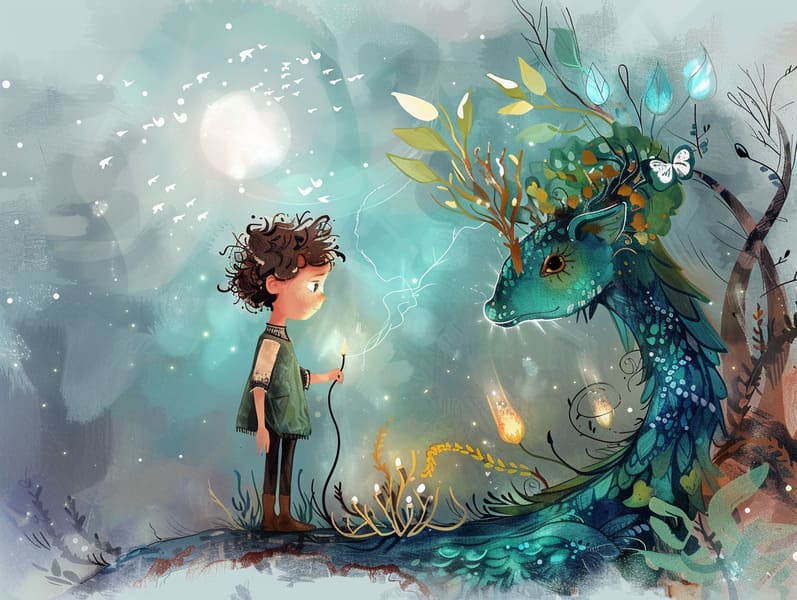The Rise of Famous Fairy Tales and Its Consistent Fascination.
The Rise of Famous Fairy Tales and Its Consistent Fascination.
Blog Article

Fairy tales have old origins. These stories have been shared from one generation to the next millennia before they were ever put on paper. They originated from a variety of traditions, including Western traditions. They were initially conveyed among mature audiences, often carrying themes and messages relevant to the societal norms and beliefs of the time.
The Grimm brothers, Jacob and Wilhelm, were among the first to gather and publish many of these beloved fairy tales. Their compilation, "Grimm's Story Collection," included stories like "The True Bride," "The Story of Hansel and Gretel," and "Snow-White and Rose-Red," which have since become classics in the world of traditional fairy tales. Similarly, Andersen's whimsical fairy tales, such as "The Little Mermaid," and "The Story of the Ugly Duckling," have won hearts worldwide, cementing their place in the pantheon of classic fairy tales.
Despite being ancient, classic fairy tales remain as important as ever, especially as kids' bedtime tales. These whimsical stories are now available in numerous formats, including beautifully illustrated books, magical animations, and web-based fairy tales.
Their continued relevance can be linked to several magical reasons:
Significant Morals: Ancient fairy tales often whisper important moral lessons. Narratives like "The Boy Who Cried Wolf" teach the merit of truth, while "The Race of the Tortoise and the Hare" show the qualities of perseverance and unpretentiousness. These narratives offer children clear distinctions between good and bad, developing their moral compass in a mild yet significant way.
Empathy and Awareness: Traditional fairy tales frequently showcase individuals facing difficulties and adversities, encouraging readers to connect with their struggles and back their triumphs. For instance, "Beauty and the Beast" demonstrates the importance of appreciating inner worth to perceive the inner self of a being, developing perception and insight.
Cultural Perception: Many classic fairy tales are imbued with the cultural contexts from which they developed. Immersing in these tales can provide delightful insights into different ways of life, nurturing a sense of cultural understanding and discernment.
Inventiveness and Imagination: The extraordinary elements in traditional fairy tales—enchanted forests—fire up children’s creative thoughts. These stories move readers to magical realms, promoting imaginative dreams and a sense of marvel that persists a lifetime.
Classic fairy tales are not only spellbinding but also illuminating. They work as entrancing tools in fostering various cognitive and emotional skills in kids. When ancient fairy tales are spoken, they improve linguistic abilities by offering new phrases and complicated sentence structures. This practice also advances auditory skills and attention, as kids remain attentive, keen to see what happens next.
Furthermore, deliberating the this site themes and characters of classic fairy tales can improve critical thinking and intellectual skills. Little ones are led to find patterns, foresee events, and catch on to cause and effect. These explorations also aid kids voice their thoughts and feelings, promoting their emotional intelligence.
In today’s technological age, the prevalence of online fairy tales has made these stories more attainable than ever. Internet sites and web apps feature huge assortments of traditional fairy tales that can be explored or played anytime, anywhere. Fairy tales read aloud are particularly widespread, featuring an entertaining method for the young to enjoy these delightful tales. Audiobooks and voiced videos carry characters and settings to life, often paired with whimsical sound effects and songs that amplify the storytelling journey.
The timeless charm of classic fairy tales lies in their ability to transform to modern times while staying true to their underlying messages. Contemporary retellings of these narratives often showcase more inclusive characters and modern settings, making them relatable to today’s audience. However, the fundamental themes of boldness, humanity, and righteousness remain unchanged, continuing to resonate with listeners of all ages.
Old fairy tales also offer a sense of reassurance and familiarity. They render a tidy narrative with a definite beginning, middle, and end, often concluding with the ending of conflicts and the triumph of good over evil. This predictability can be placating for young readers, making available a sense of sturdiness in an fluid world.
Old fairy tales continue to bewitch and edify new generations, maintaining their attraction and impact in modern society. As children's night stories, they allow a perfect blend of charm and understanding, boosting moral values, empathy, and creativity. The prevalence of online storybooks and the sought after status of fairy tales spoken validate that these traditional fairy tales remain attainable to new generations.
By preserving and releasing these narratives, we continue to laud the rich tapestry of folklore and cultural heritage. Whether you are delving into a gorgeously illustrated book, accessing a online library, or listening through an read-aloud story, the splendor of bedtime fairy tales is always within reach. These tales emphasize of the everlasting effect of storytelling and its ability to join us across eras and regions.
Be it you are exploring a beautifully illustrated book, accessing a web-based collection, or listening on an read-aloud story, the grandeur of Grimm's fairy tales is always within reach.
These fairy tales reveal of the persistent ability of stories and its ability to unify us across time and space, making a tie that charms and informs alike.